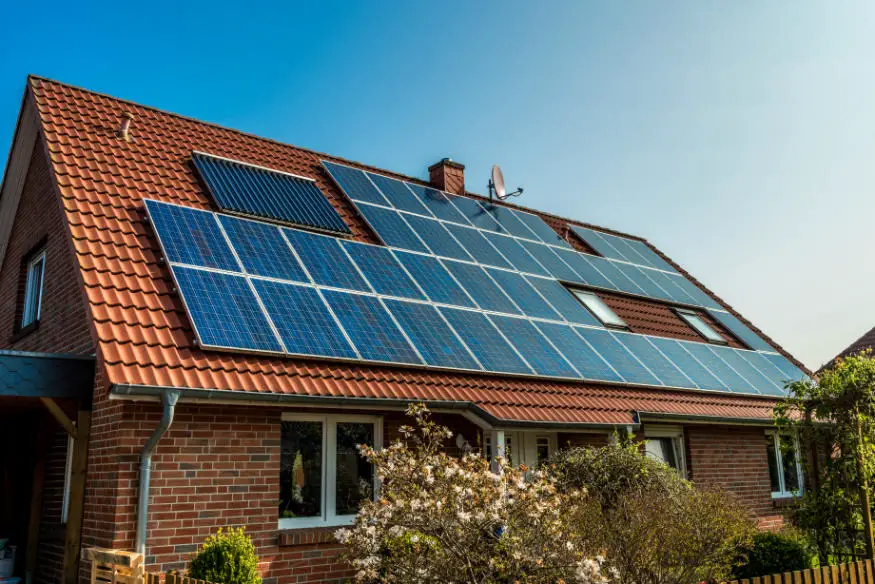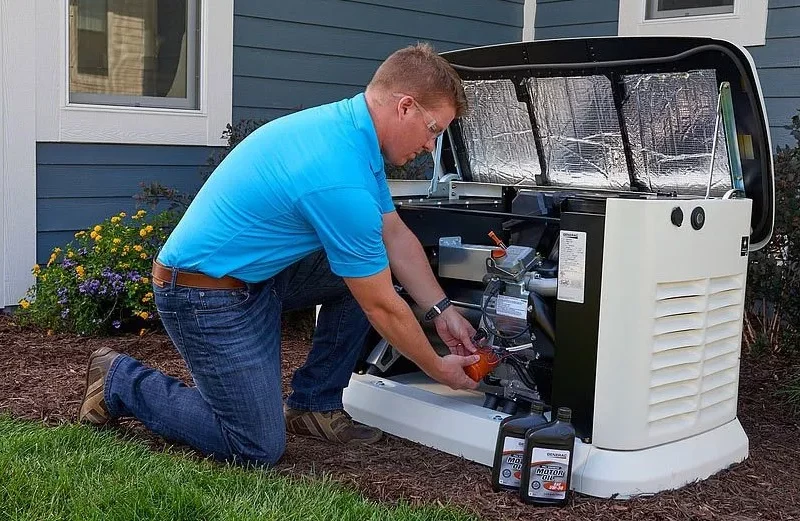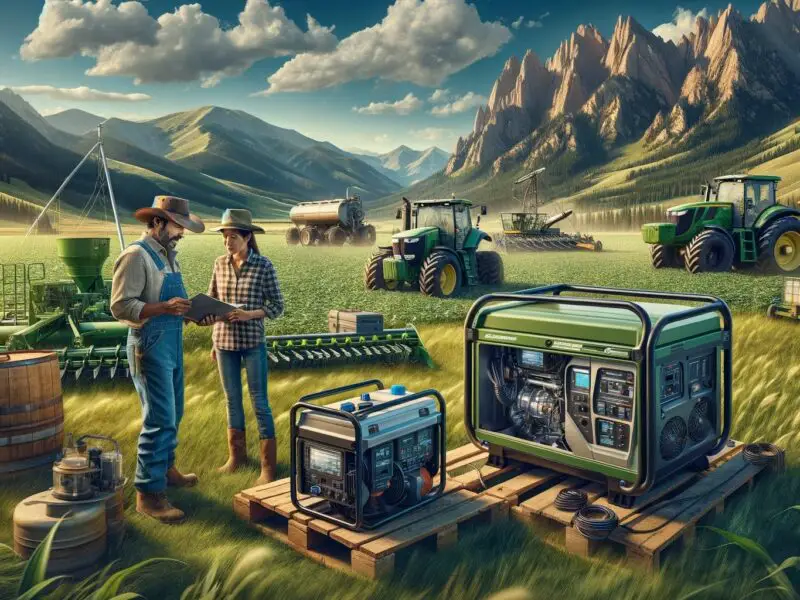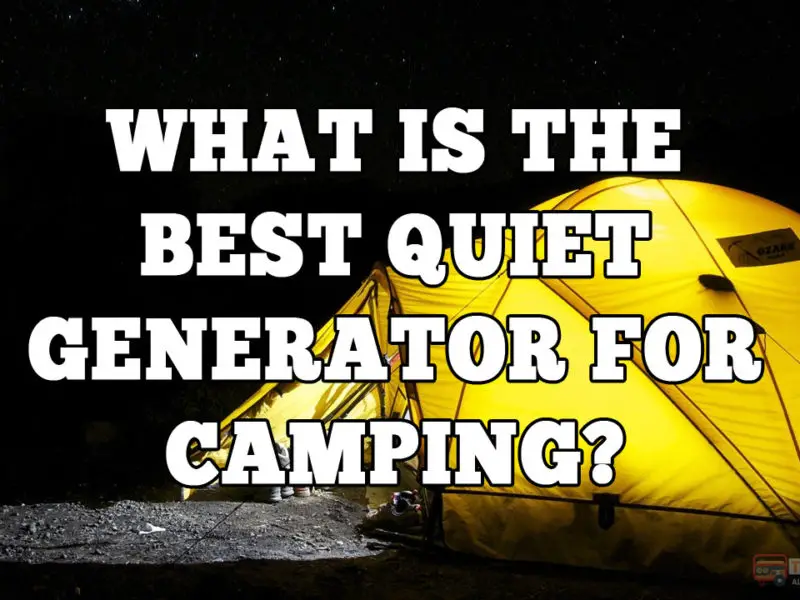Generating your own electricity can reduce energy costs while ensuring a reliable power supply. It may also allow you to generate cleaner power to reduce your carbon footprint. Above all, generating your own power may be the only solution in rural settings.
Fortunately, there are many ways to generate your own electricity. From solar to wind and hydro to traditional diesel generators, the choice is yours.
Below, we discuss seven common ways to generate your own electricity, so you no longer have to rely on grid power exclusively.
Benefits of Generating Your Own Electricity
Let’s begin by understanding the common benefits of generating your own electricity. Is it really better than getting power from the grid? As you’d imagine, it is. Here’s why;
-
Reduce your power bills
The biggest benefit of generating your own power is that you can significantly lower your power bills. Although it might be costly upfront, you’re guaranteed significant savings in the long run.
If you’re wondering how much exactly you stand to save, Nerd Wallet says the average American family spends $115.49/month on electricity, translating to about $1,385/year. You can save most of that money if you wholly rely on your own power sources. You can even use your own energy to charge your electric car.
-
Guaranteed connection
Producing your own power means you never have to worry about supplier disruptions. You’re safe even during adverse weather with strong winds and flooding.
Such a high level of independence means you can go about your work without worries. It’s even more valuable if you work from home. You can carry on with your work even on hurricane days or snowing winter nights.
-
It’s good for the environment
Remember that hydropower generators aren’t entirely environment-friendly. The majority operate on coal and other fossil fuels. Thus, they produce significant carbon byproducts. Although it’s better than using coal in your home, it still means that hydropower isn’t clean.
Most self-generated power sources are very clean. Whether it’s wind turbines or solar panels, they rarely produce carbon emissions.
-
Enjoy tax credits
Finally, generating your own electricity comes with worthwhile tax credits. For instance, the federal government currently offers a 26% tax credit for renewable power systems installed by 1/31/2021. The tax credit is a little higher (30%) for systems installed by the end of 2019. However, 26% is still very attractive.
The renewable electricity production tax credit (PTC) is a per-kilowatt-hour incentive captured under section 45 of the US tax code.
Six Ways to Generate Your Own Power
Now, let’s look at the six most common ways to generate your own power. You’ll be surprised how easily you can start generating electricity at home.
-
Residential solar panels
Residential solar panels offer the easiest way to produce electricity at home for reliable power, free of interruptions.

Every ray of sunshine that you see on a sunny day is electricity in the making. Armed with a solar panel, you can trap those rays, convert them into power, and never have to worry about costly energy from the main grid again. The panels contain solar cells that initiate electron flow when exposed to solar energy.
The best part is that you don’t have to use energy generated from solar power right away. Yes, you can also use it to power the TV and other appliances in your home directly. However, you can also store the power in solar batteries for future use. The only downside of solar power is that it’s only practical in locations with significant sunshine throughout the year.
-
Wind turbines
An excellent alternative if your location doesn’t get enough sunshine to facilitate solar power generation is wind turbines,
Wind turbines are the opposite of traditional fans. Instead of using electricity to make wind, they use the wind to make electricity. All you need to begin making electricity from wind turbines is properly installing the turbine. A wind turbine rotates when there’s wind, and the rotating blades turn an electric motor in the turbine. This results in electromagnetic energy and, ultimately, electricity.
Wind power is completely clean and very cheap. Unfortunately, like solar power, you need significant winds to rely on wind power around the year.
-
Micro hydropower stations
You can also generate hydroelectric power on your property if you have a stream running through the property. This is a slightly more complicated project. However, it works like a charm.
The most important consideration is the quantity and quality of the falling water. Thus, hilly locations are often the best. Obviously, you’ll also need to check with local authorities to get the necessary permits. If all is fine, then you need to get a water turbine to generate electricity. Typically, you need a professional for the installation.
Micro hydropower stations are one of the most reliable alternative energy solutions. You can even sell left-over power to your supplier for a profit. The only downside is that they’re also some of the most expensive to install.
-
Geothermal heat pumps
Geothermal heat pumps are heating/cooling systems that capture heat from the ground. Also known as the ground source heat pump, the geothermal heat pump use pipes to pump fluid through underground channels to capture heat.
There are two main types of geothermal heat pumps. i.e., ground-coupled closed-loop systems and water-source (groundwater) open-loop systems. However, closed-loop systems are more popular. Whichever the case, geothermal heat pumps use heat exchangers to transfer heat to antifreeze solutions, which cycle the heat out of the ground and into your home.
Although regular geothermal heat pumps only produce heat (no electricity), advanced geothermal pumps take advantage of deeper, higher-temperature geothermal resources to produce electricity. But they can be very expensive.
-
Biomass and biogas engines
People often throw away organic waste products such as sawdust, wood chips, timber offcuts, crop residue, and animal manure. However, you can use the same materials to generate electricity from home.
Organic wastes produce methane when they decompose in the absence of oxygen. This product is also known as biogas as it comes from biological decomposition. You can use biogas for cooking, cooling, and even heating. Or, you can convert it into electricity.
Converting biogas to electricity is a similar process to generating power using a generator. The gas burns, producing mechanical energy that helps turn an internal combustion engine to generate electricity.
-
Use a power generator
Finally, another simple way to generate electricity at home is through electric power generators. You can easily purchase one today, fill it with the recommended fuel produce, and switch it on to power your home.
We’ve already seen how generators work. A generator operates on fossil fuel. Fossil fuels are hydrocarbons that release significant energy when burned. Examples include natural gas, propane, and gasoline.
Power generators burn the fuels and use the resulting energy to turn a piston in an internal combustion engine. The turning piston, in turn, rotates a motor that generates an electromagnetic field and ultimately electric power.
Summary
Many people consider generators the perfect solution for homemade electricity. For one, generators come in all sizes, thus easily fitting any application, including powering an entire home. Better still, unlike the other five solutions on this list, generators don’t require much installation work. They’re essentially plug-and-go.
Solar panels are another excellent option, especially if you live in a location that sees plenty of sunshine throughout the year.



